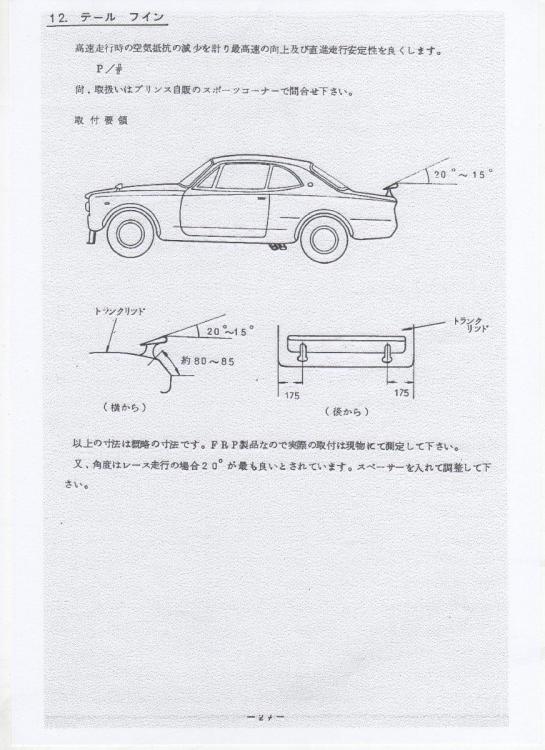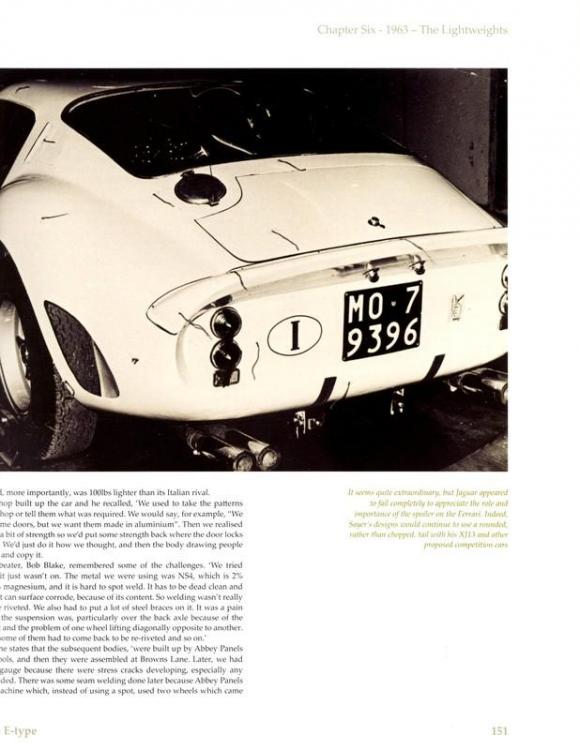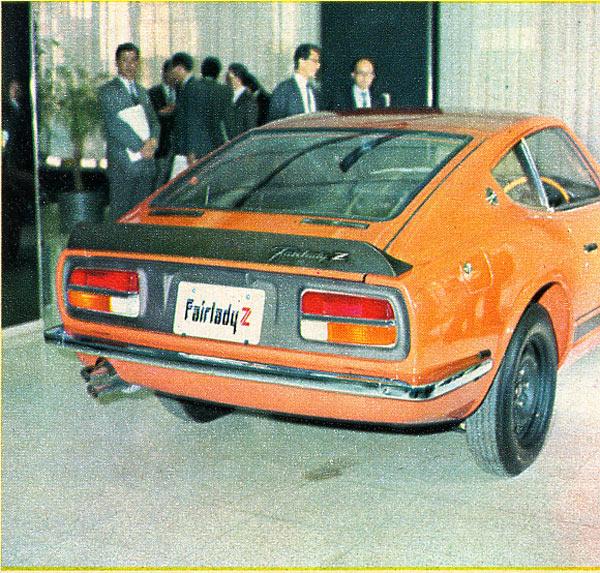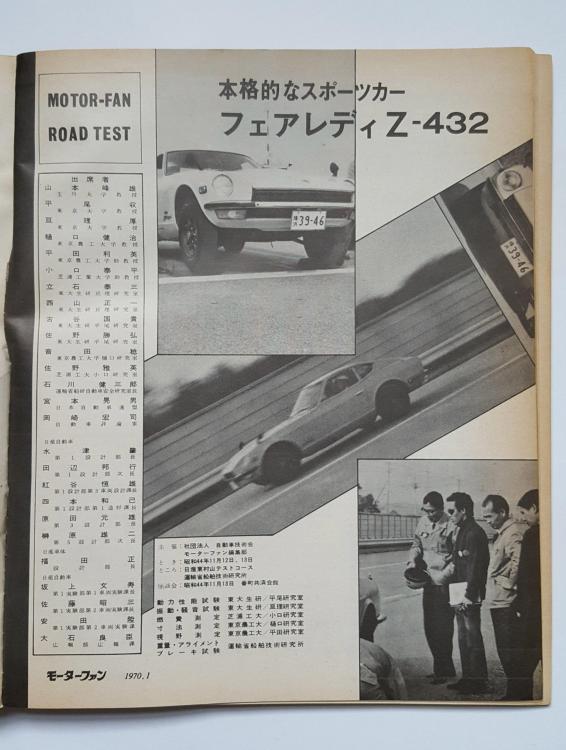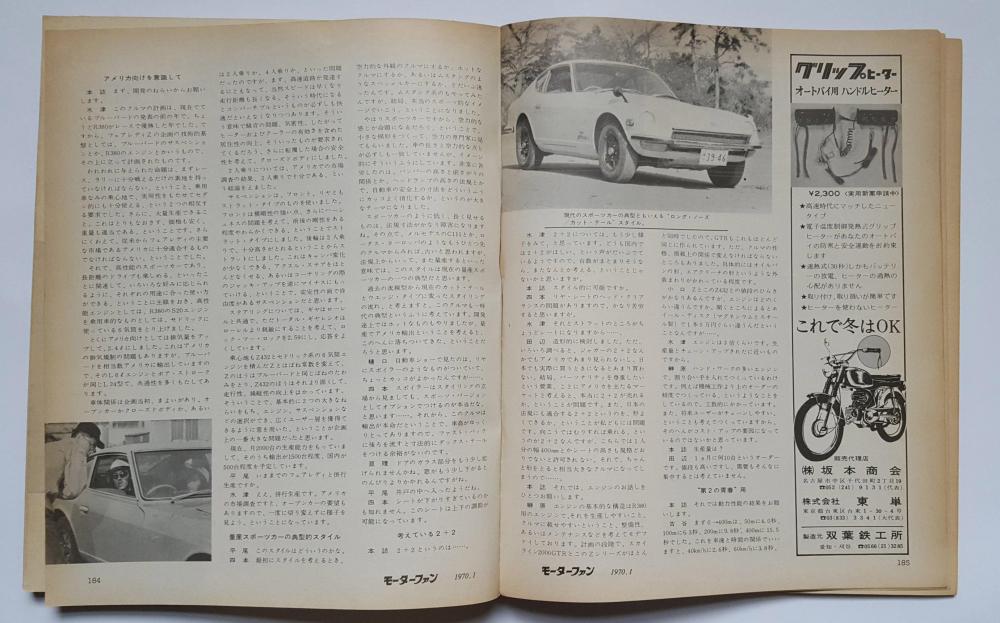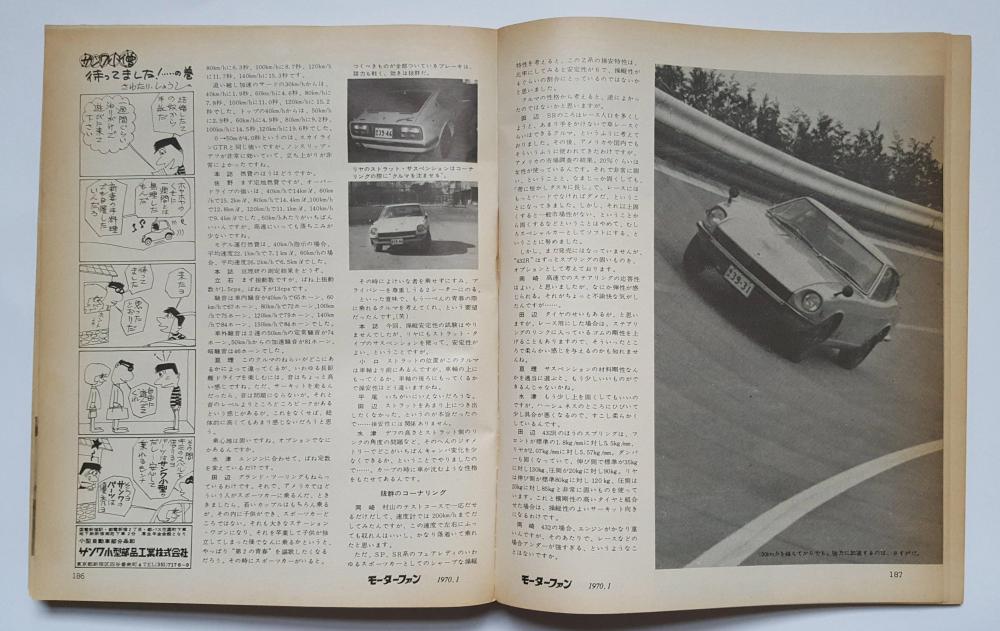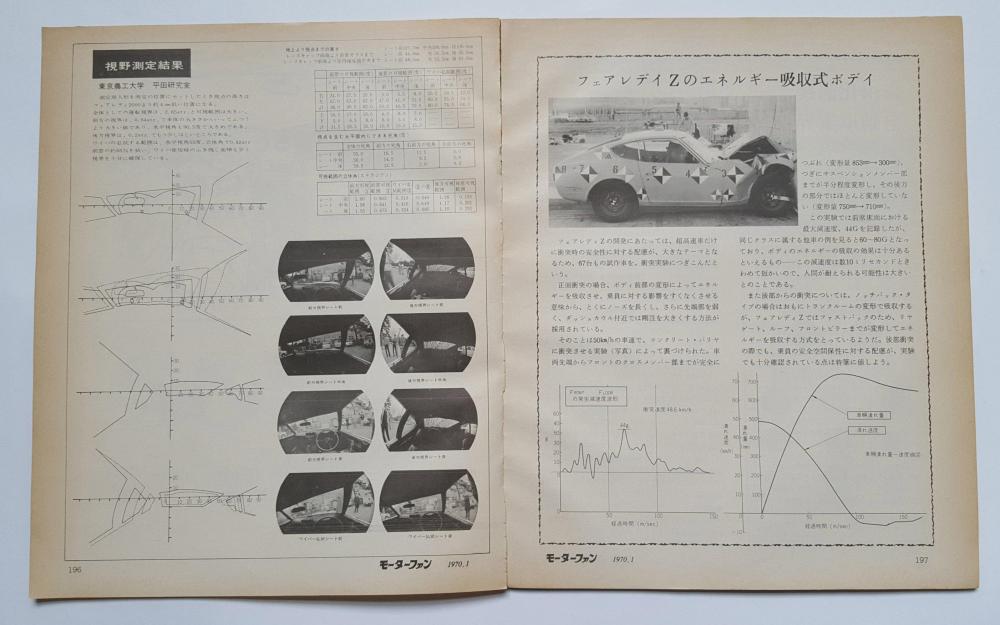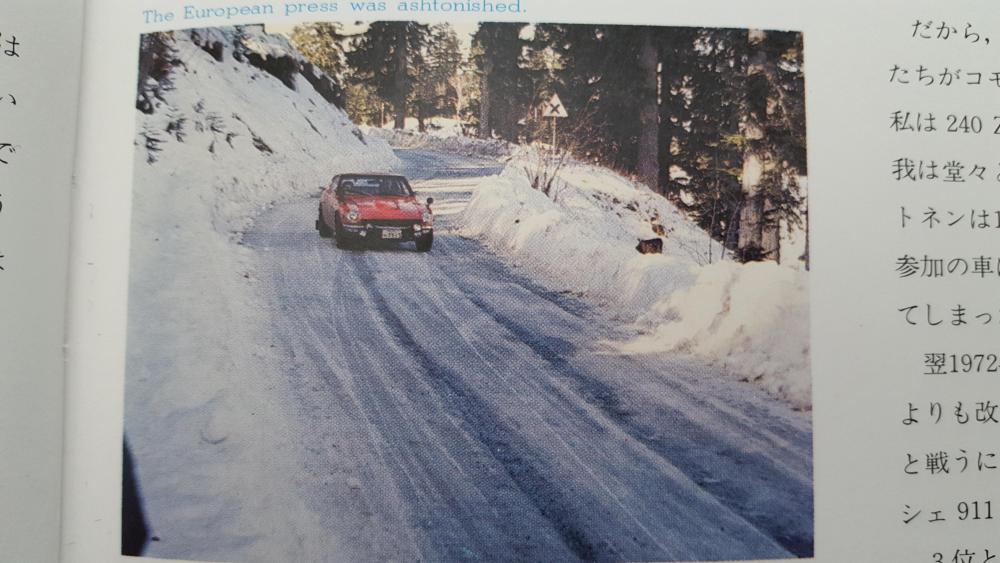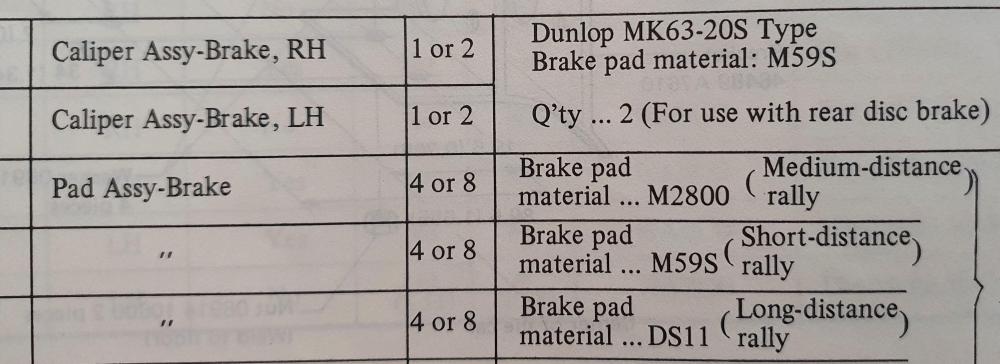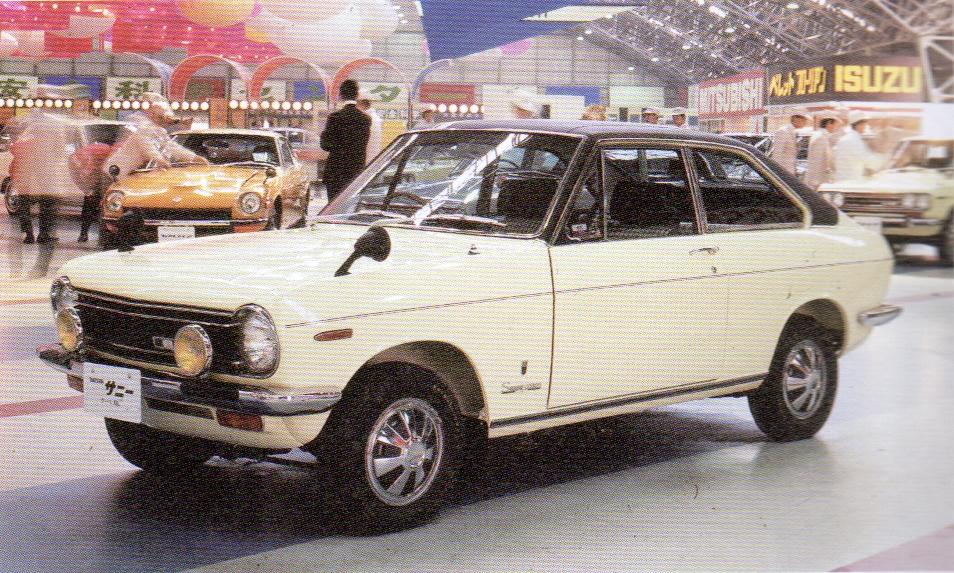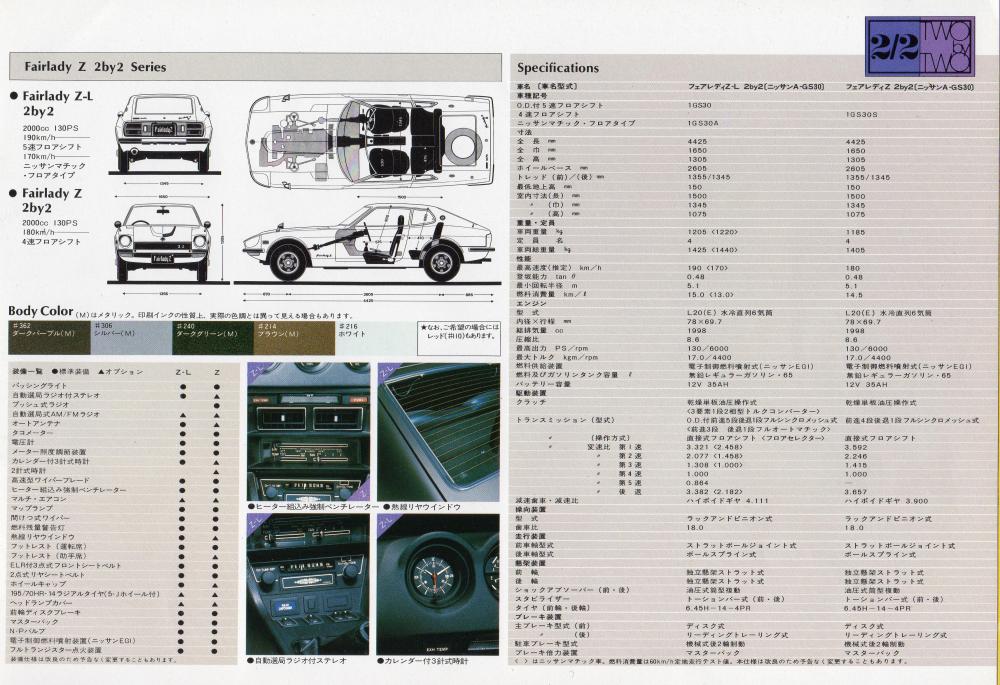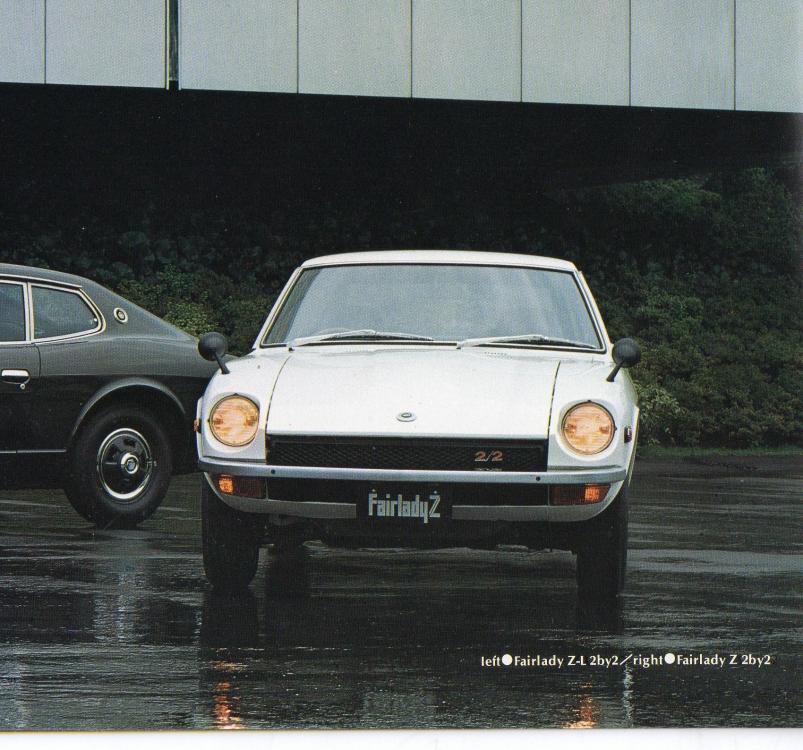Everything posted by HS30-H
-
Doing laps *incar videos*
Not wishing to be 'that guy', but those Porsches looked like they were on club parade laps. Hardly any kind of 'race', was it?
-
Brand new 'Quick Racks'
As I've used that combination (Japanese market stock 15.8:1 rack ratio, and the 'short' 105mm knuckles) on four of my cars, I can tell you that it is - in my opinion - very sporting indeed, and not *too* heavy, even with the smaller diameter Izumi 'Datsun Compe' steering wheel.
-
Brand new 'Quick Racks'
It does, but - for example - a 15:1 steering rack ratio isn't anything like hard work on an S30-series Z. It is well suited to the nature and philosophy of a Sports/GT car, whereas a 17.8:1 ratio - as used in the early HLS30U variants for the north American market - is more like a family car/sedan type ratio. Overly light, and not exactly sharp and responsive, is it? These cars being Japanese, it is probably more pertinent to look at the Japanese market variants for that. You might not have noticed that Nissan put quite a lot of effort into making sure that the ergonomics of these cars worked just as well in both LHD and RHD forms, even if the layout of the componentry was naturally biased to their RHD market origins. Jason's car was originally a US market variant and I believe he considers the 17.8:1 rack ratio to be a little on the 'slow' side. So as part of his rack refurb he's taking the opportunity to 'quicken' up the ratio of the rack and pinion set. I'm not aware of anyone else doing that, so hat's off to him.
-
Testing Spoiler in 1969
-
Testing Spoiler in 1969
Both that 196 SP 'Fantuzzi Spyder' and the Cobra Daytona Coupe were examples born of Kamm tail type styling, and both integral to the shape of the rear ends on the cars. The Daytona more exaggerated, but still integral. You were talking about add-on/bolt-on spoilers previously. My 250GTO pic is an example of a bolt-on being tested. Some people will argue that these are low-volume racing specials, and we should be looking more at series production road cars. The 432-R could fall into both camps depending on viewpoint. Trust me, Brock never had anything to do with the rear spoiler on the 432-R. I'm a big admirer of his work (especially with the Daytona Coupe, although I think AC's own A98 Coupe was both more lovely and more efficient) but let's give Nissan and their engineers a little bit more kudos for their work, please. AC A98 Coupe:
- Testing Spoiler in 1969
-
Testing Spoiler in 1969
KPGC10 Skyline GT-R had a homologated bolt-on rear spoiler/reverse wing, but it was a Sports/Race Option part and not standard equipment or a showroom order option. In any case, it was nearly a year later than the 432-R. You'll end up chasing your tail looking for the 'first' rear spoiler, especially if you insist on it being 'bolt-on' rather than an intrinsic part of body design (Kamm tail et al), and Google searches in English will probably be dominated by USA Uber Alles effect, where people think that GTO means Pontiac product. Nevertheless, certain Shelby Mustangs, the aforementioned Goats and several other proto Muscle Cars will certainly be in with a shout. Mr B might even pipe up and cite something called a "Camero", whatever that is when it's got its hat on... I reckon your time would be better spent trying to spread the word that the first S30-series Z rear spoiler wasn't a BRE design, which is something I've seen and read many times. I may even remember reading it on a now-deleted zhome.com page. GTO:
-
Testing Spoiler in 1969
432-R on October 18th 1969, at Nissan's Ginza, Tokyo head office for the 'Press Preview' event prior to the opening of the Tokyo Motor Show:
-
Testing Spoiler in 1969
I just think it would have been a little late to be developing parts like that. After all, this was taking place a matter of weeks before the 432-R would go on show as a finished product - available to buy - with the rear spoiler as standard equipment. I think you're talking about the January 1970 issue of MOTOR FAN magazine, which featured a 432 in one of their comprehensive road tests. Being a stock 432, it didn't have a rear spoiler fitted as standard equipment (it was an extra cost showroom option, so the car had to be ordered with one) and was tested as such. Here are a few pages from the article:
-
240z VIN
Isn't it more likely that the previous USA & Canada 'Kaku U' testing expedition for the 510 - in late 1967 - informed them of what would be necessary that far north? Nissan already had plenty of experience in snow rallies through the 1960s, and in certain regions of Japan - especially Tohoku and Hokkaido - serious snow is a certainty every winter. Dedicated snow tyres, chains and studs would not have been a particular novelty for them. I would think it likely that they arranged for their own Japanese snow tyres to be ready for them in particular locations during the 'Kaku U' expedition planning?
-
Testing Spoiler in 1969
So, here's the QED. Do we look solely at the 'Datsun 240Z' / HLS30U and its local sub-variants for our research and understanding of these cars, or do we look at the whole family? I think the answer is obvious, but I find myself posting in another thread today where it seems, to some, not to be.
- Testing Spoiler in 1969
-
Testing Spoiler in 1969
The word 'Testing' might be doing quite a lot of heavy lifting in this context. I would say it had already been 'tested' in Japan, approved for production, lined up to be fitted as standard equipment on the 432-R, and an extra-cost showroom option on the other Japanese market models. With the initial batch(es?) of North American market models being somewhat de-contented to meet a low RRP, it seems unlikely that a rear spoiler would have made the cut in any case.
-
Testing Defrost in 1969
Deluxe models (Fairlady Z-L and Fairlady Z432) had rear defrosters from the beginning of production.
-
240z VIN
So how does HLS30-01776 make any sense as a 12/69 production dated entity? How can it be explained? Taken at face value, it makes a mockery of any 12/69 production dated door tags on the cars HLS30-00540 and up. Clearly door tags were being stamped and attached after the fact. Looking back at the zhome.com page where this topic is discussed, it is possible to see some more evidence of the illogical habit not only of painting 1969 production-dated Fairlady Z, Fairlady Z-L, Fairlady Z432 and Fairlady Z 432-R models out of the story, but also of painting HS30-prefixed cars out of Nissan Shatai's early production figures. Here's an example: So that's HLS30-00001, HLS30-00002 and HLS30-00003 cited as "the first pre-production prototype" Datsun 240Zs, whilst Nissan Shatai's own production data states the following: May 1969 - total 2 cars - one domestic, one export: 1 = S30-00001 (Factory prototype 1) 2 = HLS30-00001 (Factory prototype 2) June 1969 - total 1 car - domestic: 3 = PS30-00001 (Factory prototype 3) July 1969 - total 4 cars - two domestic, two export: 4 = HLS30-00002 (Primary Production prototype 1) 5 = S30-00002 (Primary Production prototype 2) 6 = PS30-00002 (Primary Production prototype 3) 7 = HS30-00001 (Primary Production prototype 4) August 1969 - total 7 cars: 8 = S30-00003 (Primary Production prototype 5) 9 = S30-00004 (Primary Production prototype 6) 10 = S30-00005 (Primary Production prototype 7) 11 = PS30-00003 (Primary Production prototype 😎 12 = HLS30-00003 (Primary Production prototype 9) 13 = S30-00006 (Primary Production prototype 10) 14 = PS30-00004 (Primary Production prototype 11) ...so not only ignoring the S30 and PS30-prefixed cars (which are UNDENIABLY an important part of the concept, design, engineering and production processes) but also managing to somehow let HS30-00001 slip through the net in favour of HLS30-00003. Whoops. Why do this?
-
240z VIN
This presumes that 100% of those 1969-production HLS30-prefixed cars were USA/North American market variants, which is certainly not the case. Even if a very small percentage of them were effectively 'European' market variants, they still deserve to be mentioned. Here's a photo of an HLS30-prefixed Nissan works rally test car being used in the south of France during the month of January 1970. It will - by definition - have been one of those 543 cars produced in 1969, and it wasn't a USA/North American market car:
-
240z VIN
Perhaps some confusion between S30-series total and 'Export' variants total? Nissan Shatai's production figures for 1969 show that they made a total of 969 'Domestic' variant S30-series Zs, and 543 'Export' variant S30-series Zs. That's a grand total of 1,512 cars. Those 543 'Export' variant S30-series cars would have had HS30 and HLS30 chassis prefixes, whilst the 969 'Domestic' variant S30-series cars would have had 'S30' and 'PS30' chassis prefixes. As you can see, asking specifically about 'Datsun 240Z' production will only give you half the story...
-
Looking for a set of Sumitomo calipers MK63
Two different publications, both factory Competition Preparation manuals for models that are not S30-series Zs.
-
Looking for a set of Sumitomo calipers MK63
None of the MK63 calipers are "Z-specific". They were specified as Sports & Race Option many Nissan models of the late 60s through late 70s period, and in both vented and solid rotor variants. The '20S' suffix corresponds with the width of the vented rotor used on the (wide) vented rotor type caliper. From Nissan factory documentation:
-
24th October 1969 - The S30-series Z public debut.
At least three, if you count the 432-R. The show lasted just over two weeks, and most of the major exhibitors moved cars around/switched their displays a little whilst it was taking place. With over 1.5 million visitors, they probably wanted to maximise the viewing opportunities. Nissan's circular rotating display stand and the 'Grand Prix' wall certainly saw some car switching during the event. That's a great blog with some really nice photos. Thanks! This might well be the same car, visible behind the Sunny in one of the other display sections:
-
JDM/option Footrest, differences.
But are you going to add some factory-style doublers to the underside of the mounting holes? It seems like a no-brainer to me. The footrest - in use - exerts quite a lot of leverage force on the floorpan. The factory doublers - with their turned-up edges - beef up the mounting points considerably. I think they are worth the effort of replication.
-
Z's on BAT and other places collection
Most of it has already been covered on this forum over the years. The Japanese market S130-series model designations list in post #18 of this thread was originally posted some years ago on classiczcars when the same type of question arose, so the information is 'out there' already. If there is a 'problem' it is - in my opinion - more of a lack of imagination than anything else. Look at the comments on that Bring-a-Trailer S130-series Fairlady 280Z auction. For some people the idea that a '280Z' isn't just *one* thing appears to be akin to witchcraft. People appear to know that these cars were all made in Japan, but have little to no awareness what that meant for the Japanese market itself.
-
Z's on BAT and other places collection
No, again, Japanese market had its own ideas. 'G' prefix in the S130-series denoted '2/2' ('2 by 2') model and appropriate emblems, just as it did in the S30-series. The '2 by 2' name was used extensively by Nissan in its sales and advertising for the cars. No '2+2' / 'Two plus Two' in the Japanese market. Export markets only. Factory sales brochure. These are for the S30-series, but S130-series followed suit:
-
Z's on BAT and other places collection
This is correct. No 'X' on Japanese market S130 models: *FAIRLADY Z ( S130S ) - L20E engine *FAIRLADY Z-L ( S130 ) - L20E engine *FAIRLADY Z-T ( S130J ) - L20E engine *FAIRLADY Z 2 by 2 ( GS130S ) - L20E engine *FAIRLADY Z-L 2 by 2 ( GS130 ) - L20E engine *FAIRLADY Z-T 2 by 2 ( GS130J ) - L20E engine *FAIRLADY 280Z-L ( HS130 ) - L28E engine *FAIRLADY 280Z-T ( HS130J - BC ) - L28E engine *FAIRLADY 280Z-L 2 by 2 ( HGS130 ) - L28E engine *FAIRLADY 280Z-T 2 by 2 ( HGS130J - BC ) - L28E engine
-
Where can I find L20a connecting rods?
You could get a reasonable improvement by simply changing your camshaft, but - in my opinion - the simplest one-hit modification with the best butt-dyno results on one of these cars is a differential ratio change... What market model is your car, and what differential ratio does it have?







